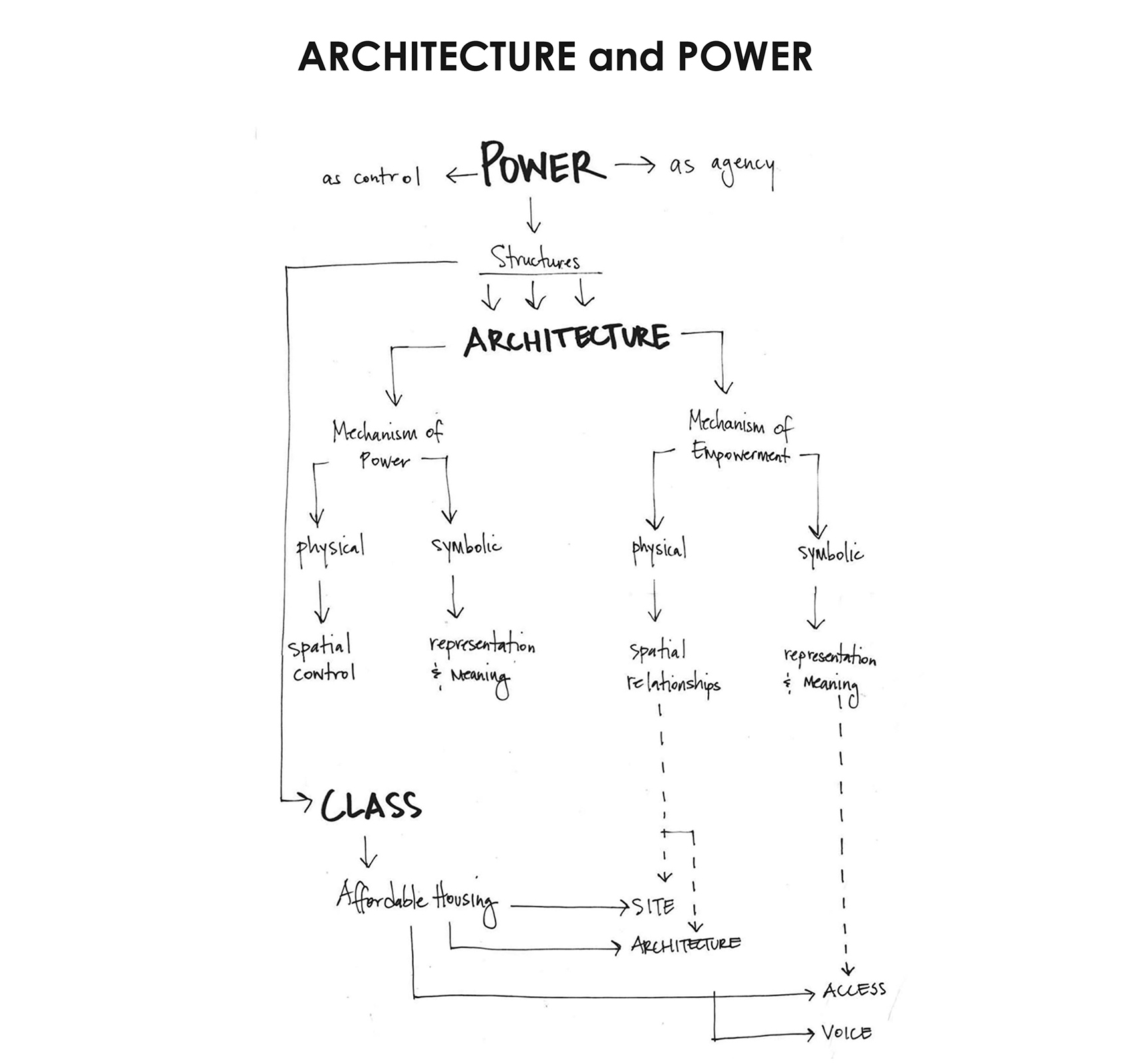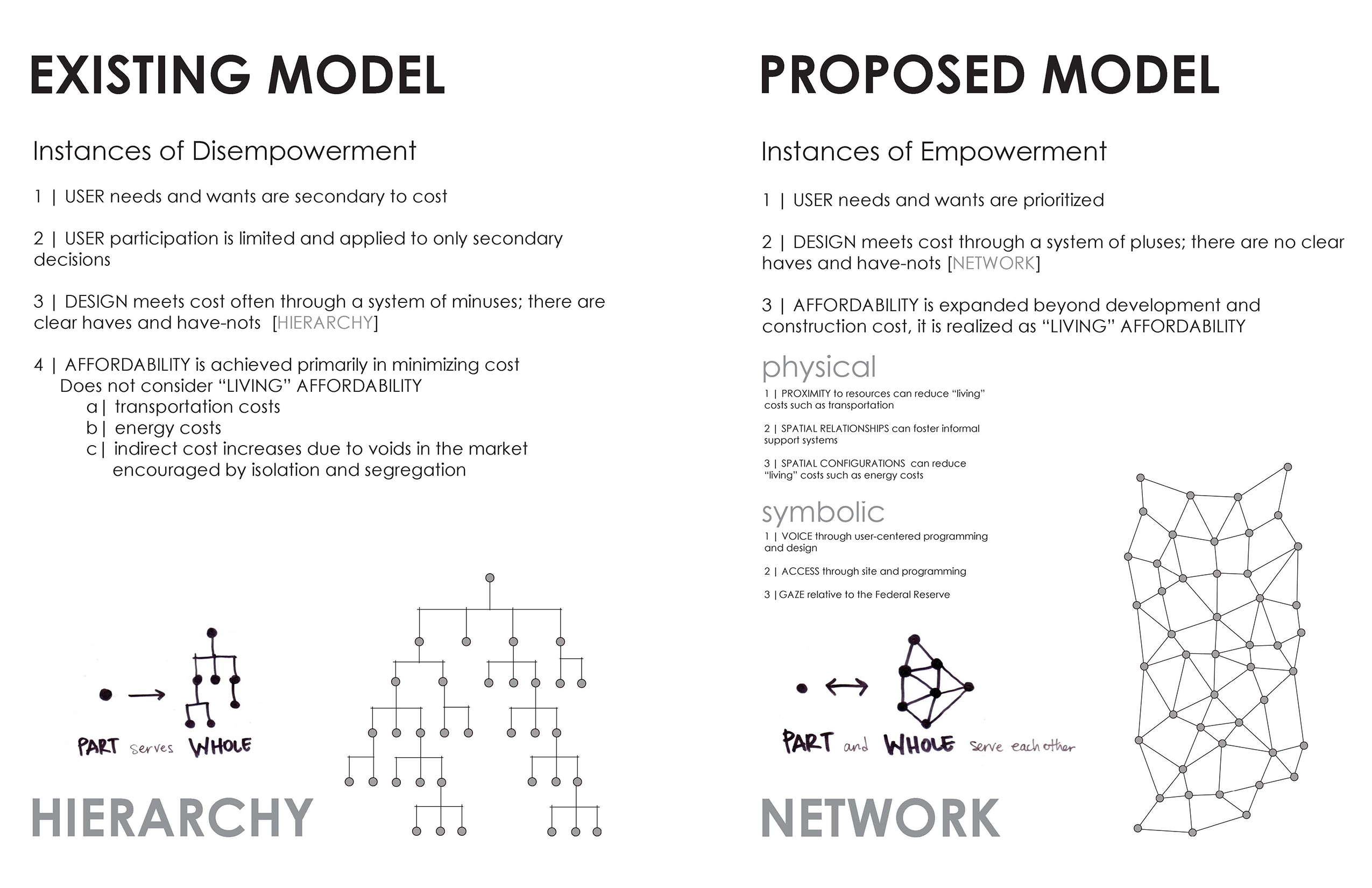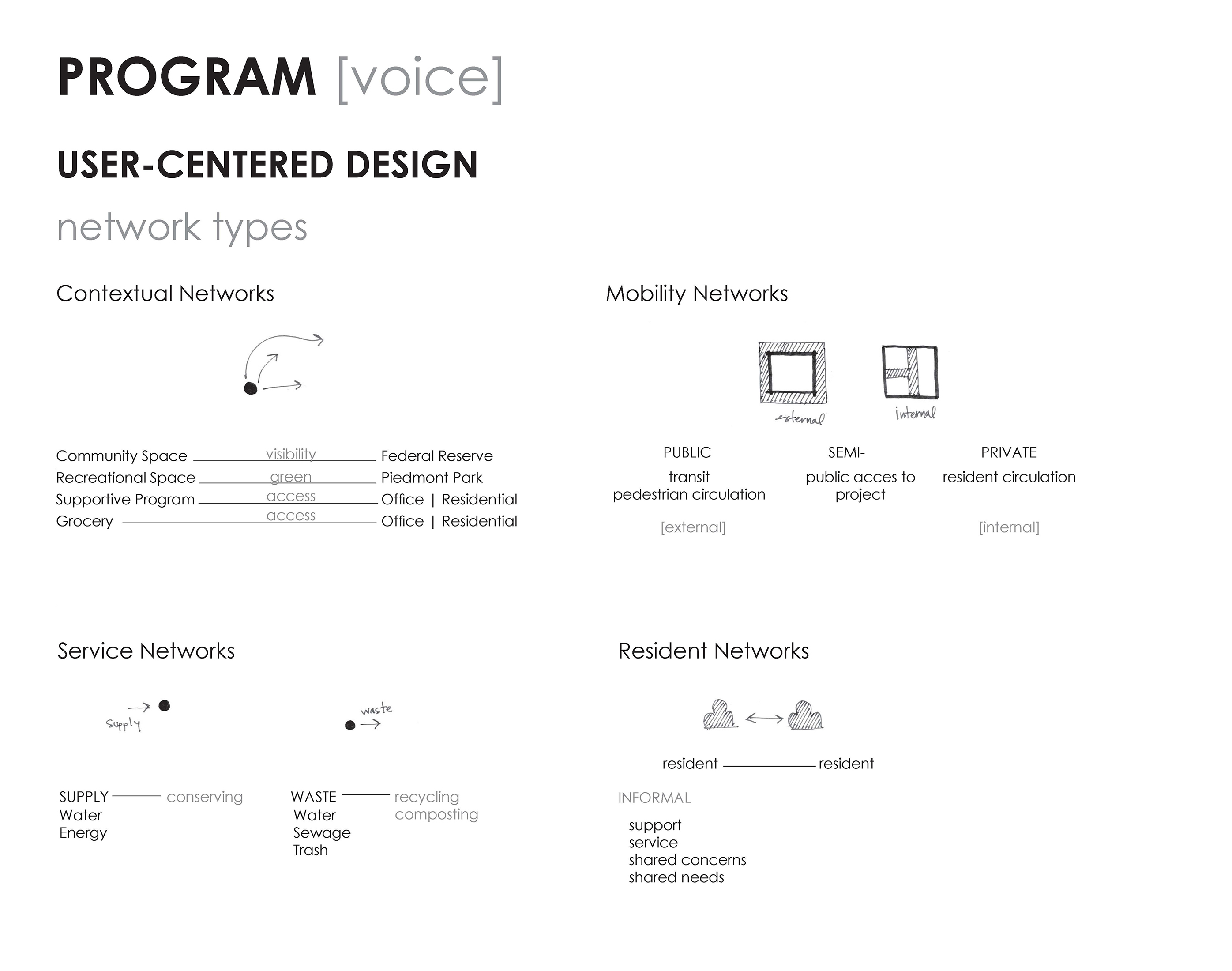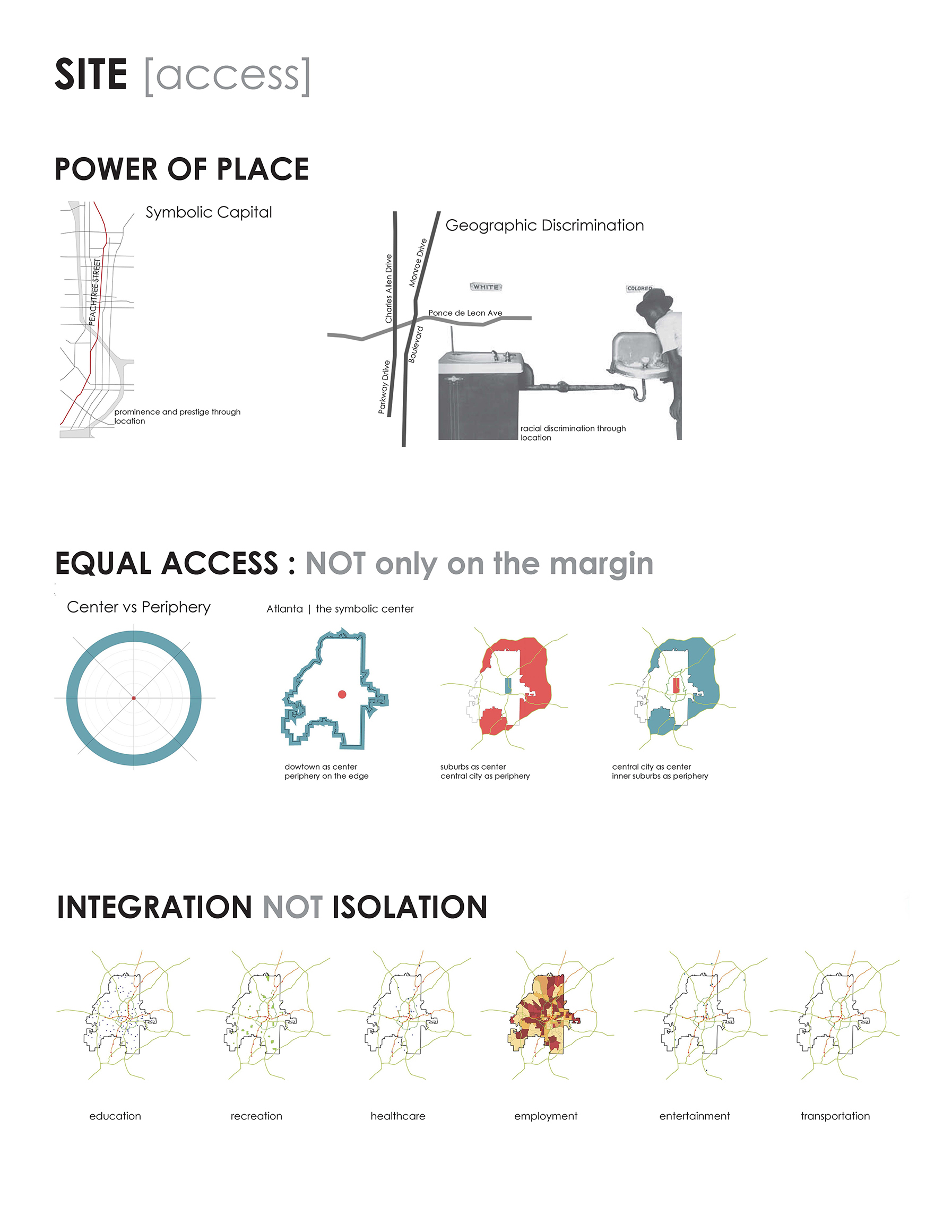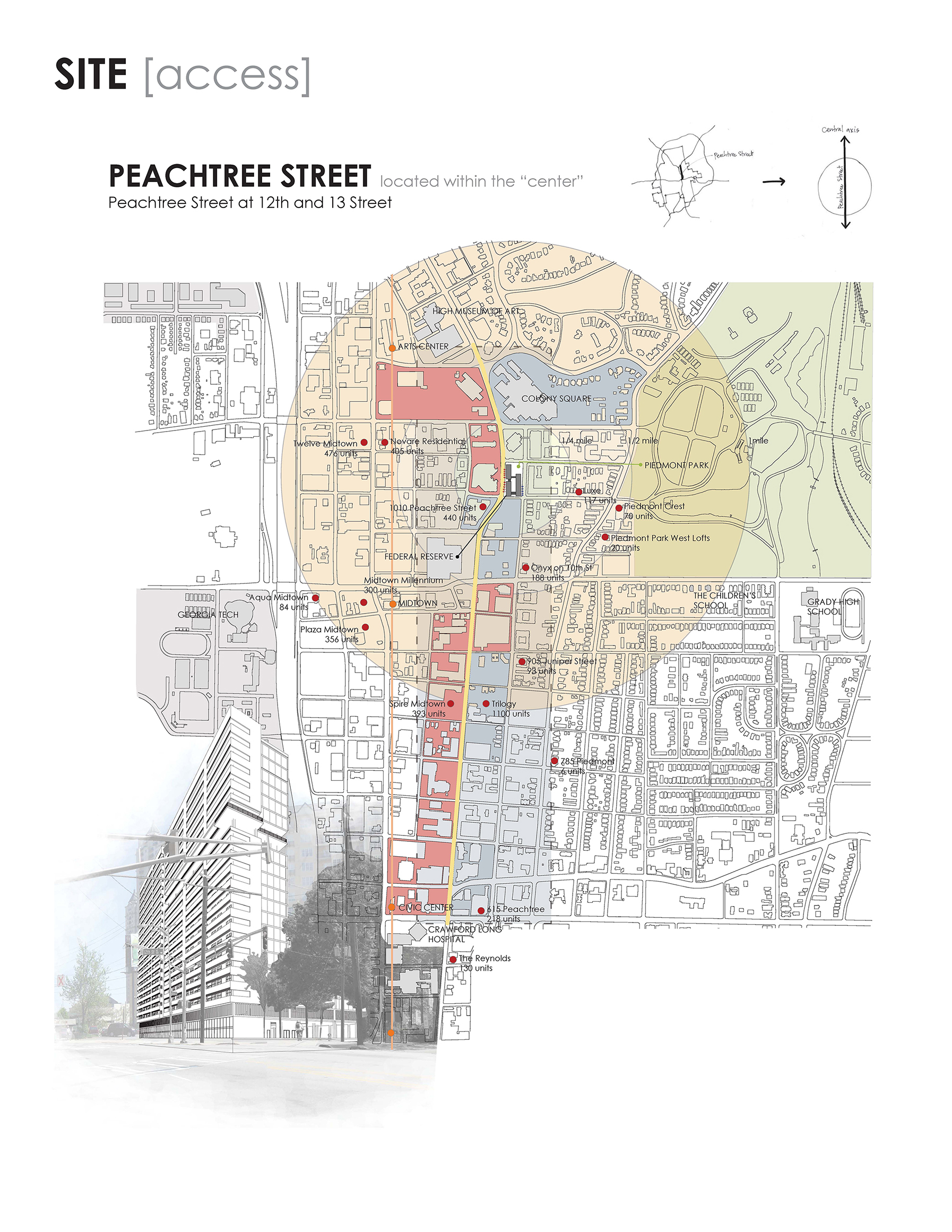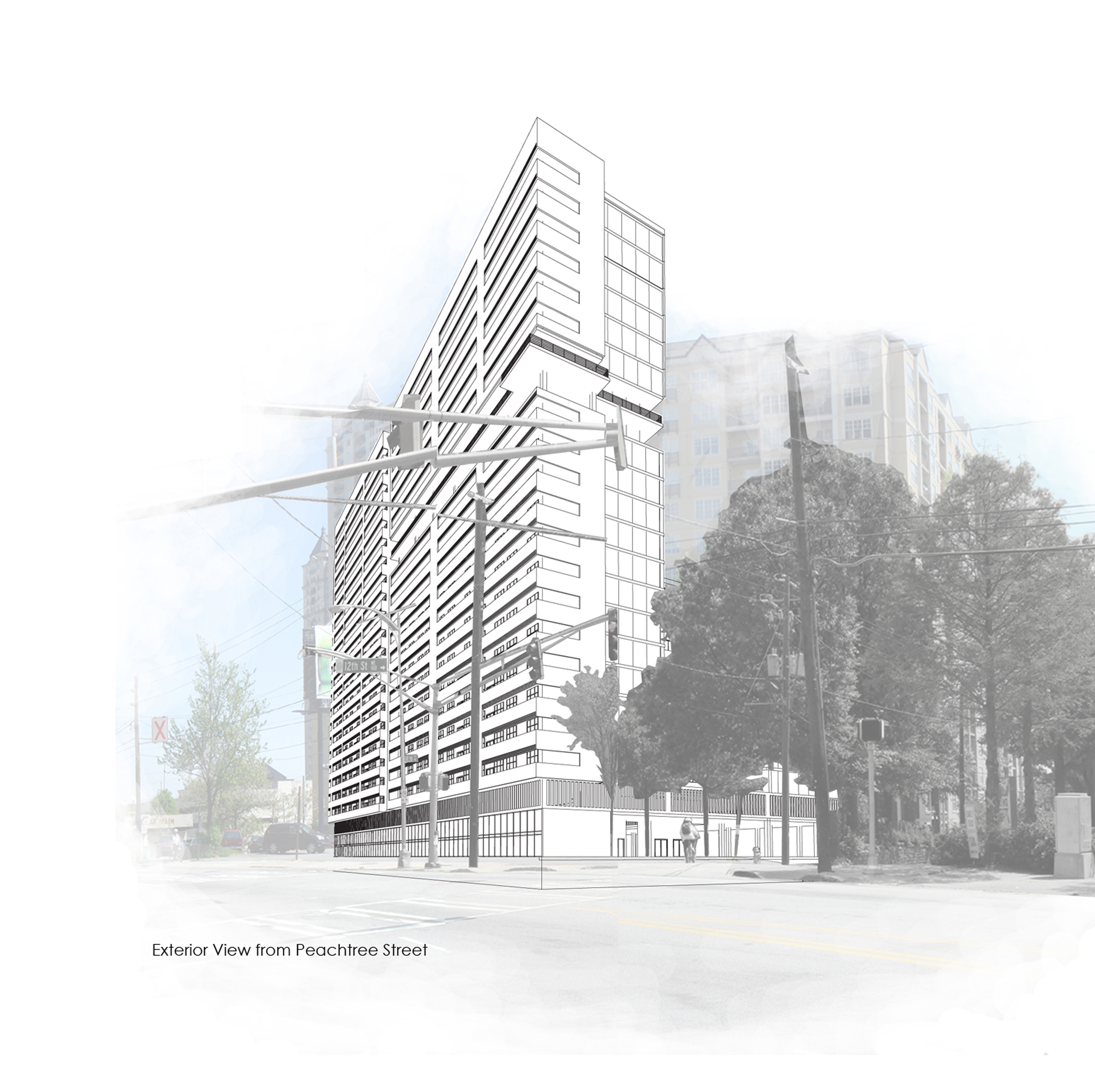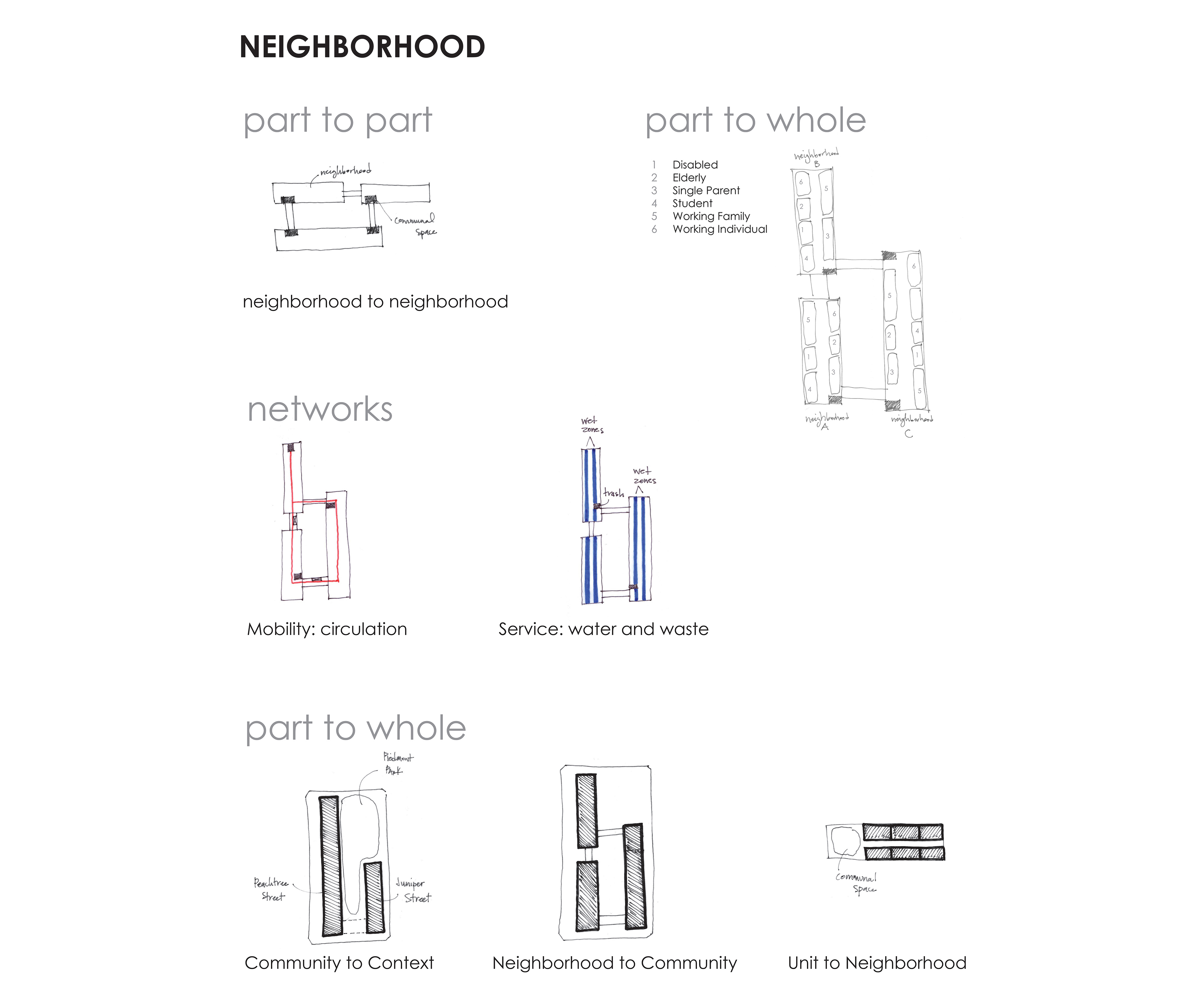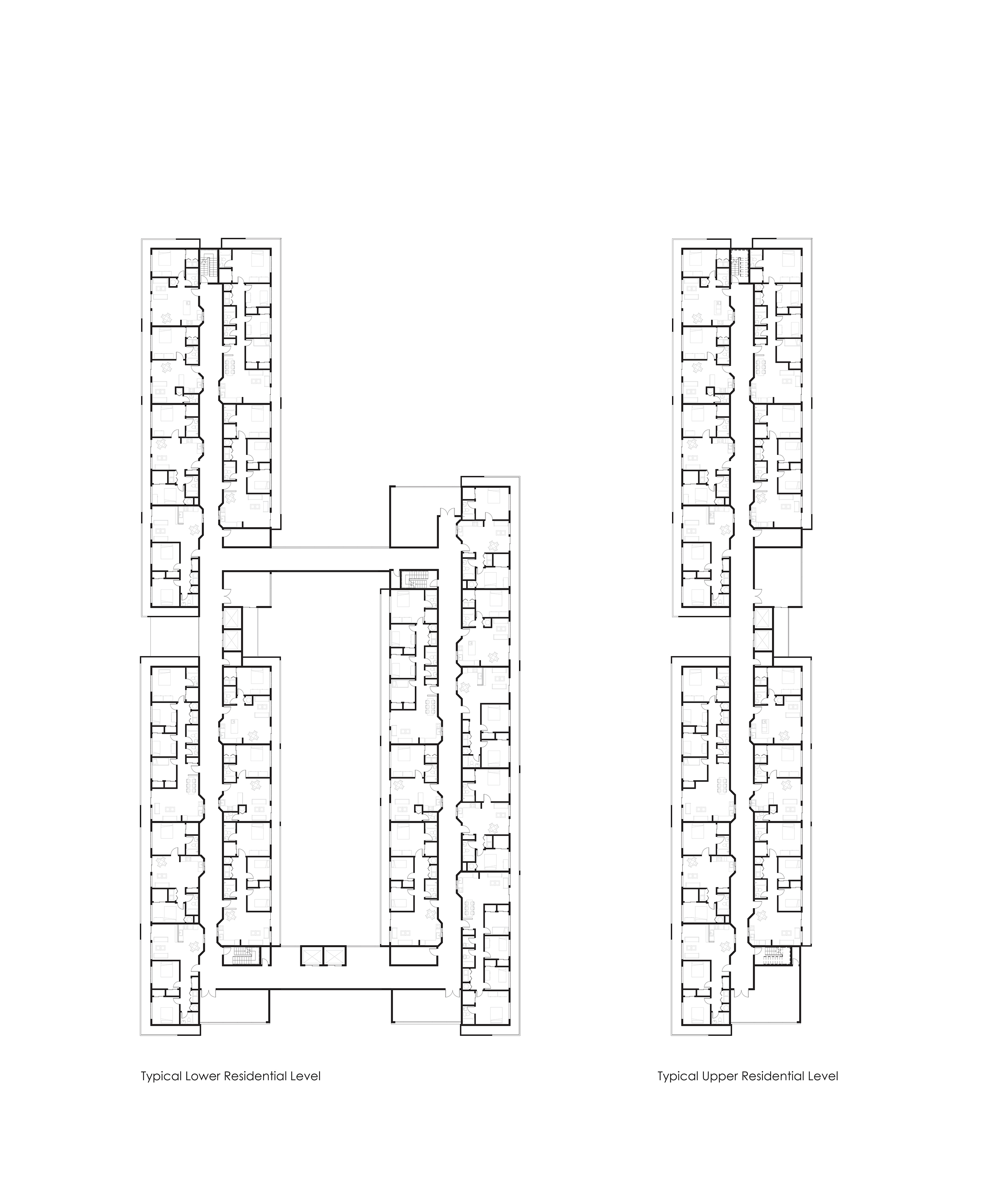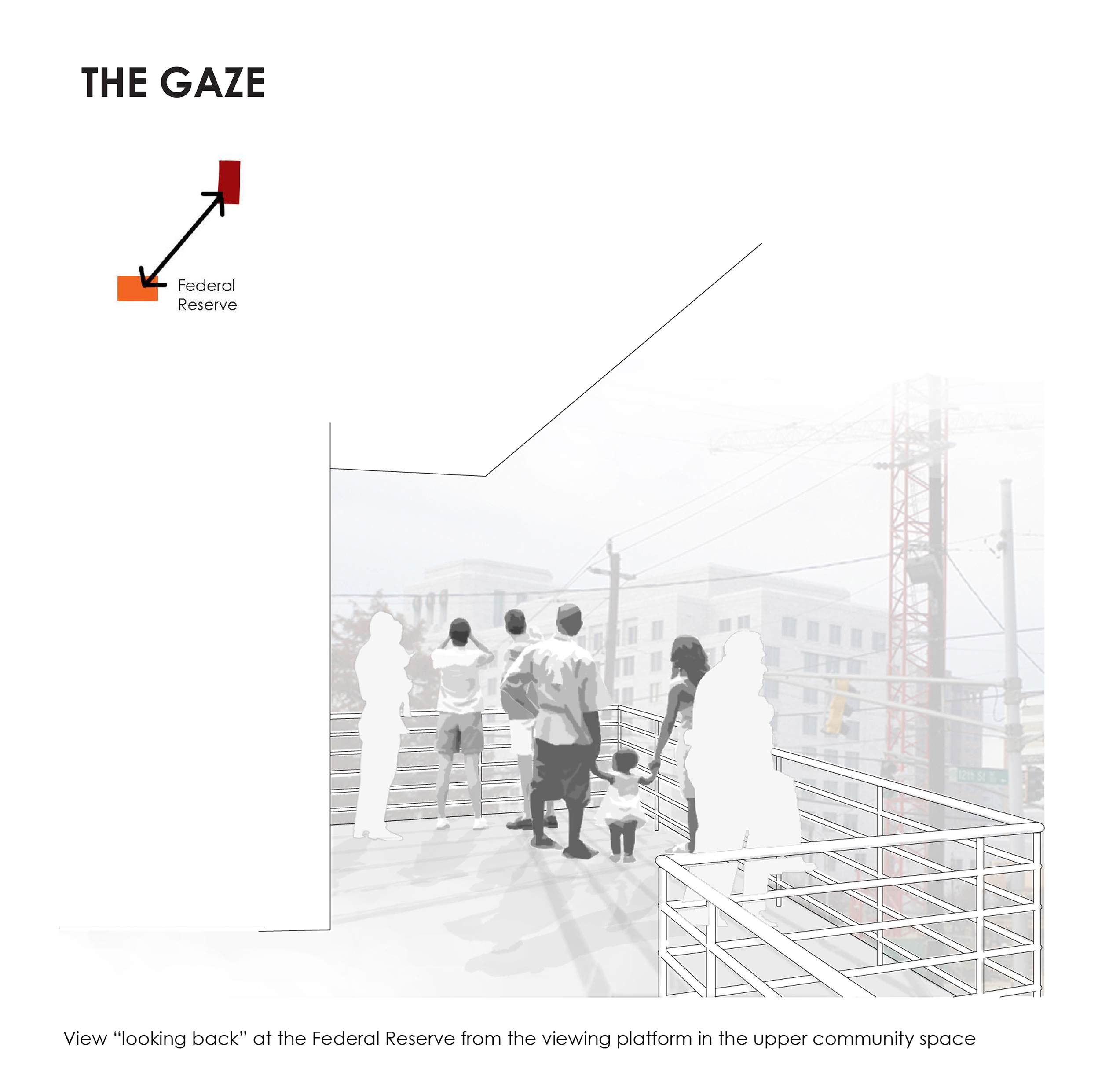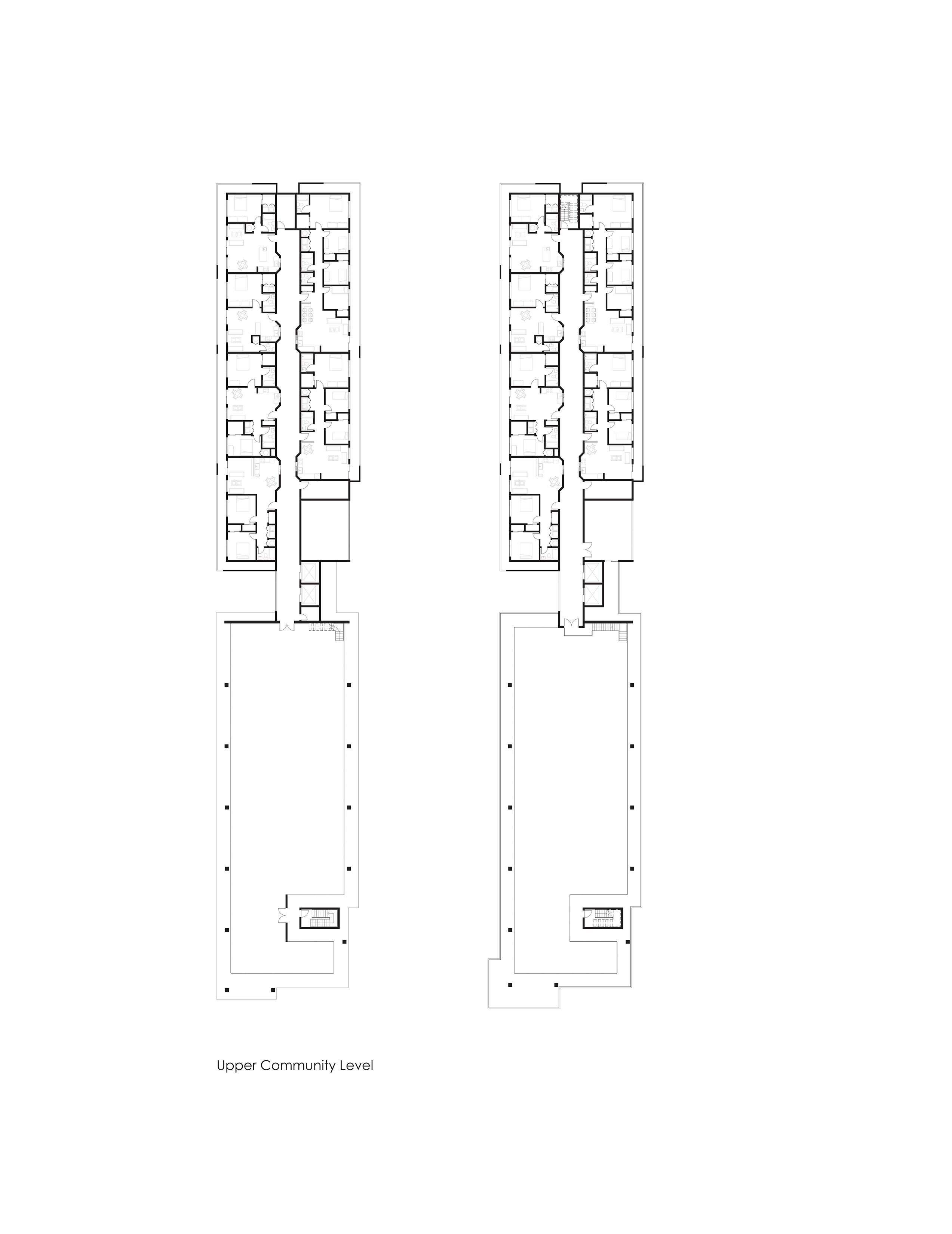2007 | Masters Project | Georgia Tech
As one of the more permanent ways in which we experience our physical environment, architecture has an impact beyond just the physical. It situates itself within larger social and political power structures in society. Historically, architecture has reinforced the social power structures within which it has existed in two ways; physically through spatial configurations that institute control and symbolically through systems of representation and meaning. This research looks closely at class as a power structure and how architecture can reconstitute these mechanisms of power as mechanisms of empowerment in an affordable housing community. Furthermore, the research seeks to achieve a community through which the architecture fosters a transition from power-as-control to power-as-agency, physically through spatial configurations that foster informal networks and symbolically through instances of access and voice.
Within the existing model of affordable housing there are several instances of disempowerment for low-income residents and families. The user needs and concerns are secondary to cost and the model utilizes a very limited definition of affordability. The proposed model is a user-centered process that begins with the user needs and requirements and the design is evaluated based on its ability to meet them. Furthermore, the research looks at how the architecture, specifically the spatial relationships and configurations, can foster and support the development of networks as a means by which living affordability can be transferred to the residents.
The project design operates on three levels; the scale of the community, the neighborhood, and the individual. Each is a part of the whole, a node within the larger network and community. It is in these networks and relationships of part-to-whole and part-to-part that empowerment is rooted. The physical spatial relationships and their configurations foster a network that strengthens resident support and prioritizes resident needs. The project’s site selection and the program definition, constitute symbolic empowerment through access, voice, and the gaze. All three seek to integrate the community into the larger context and prioritize resident needs first. By doing so, the project translates control to agency, consequently empowering the residents.

